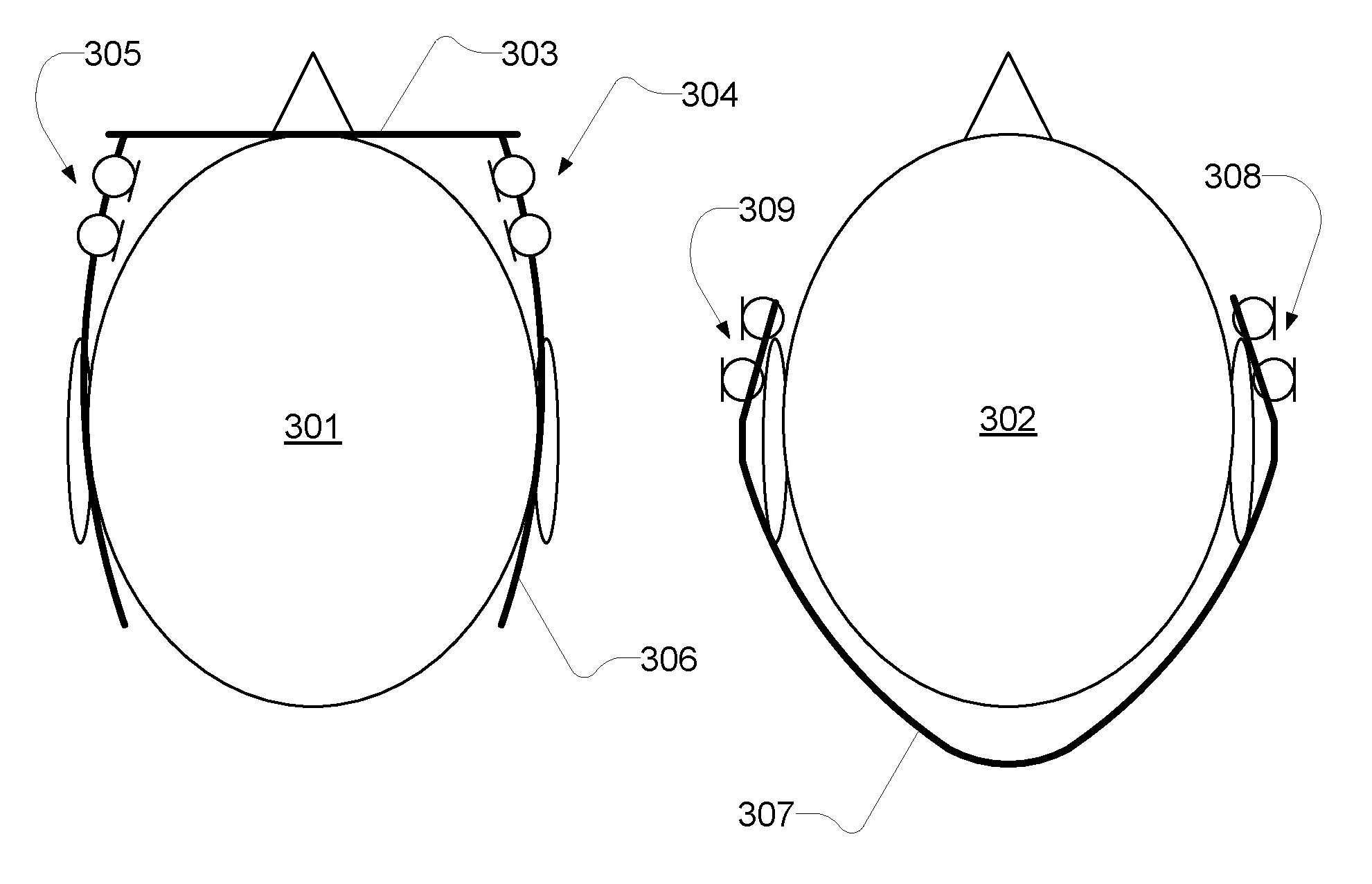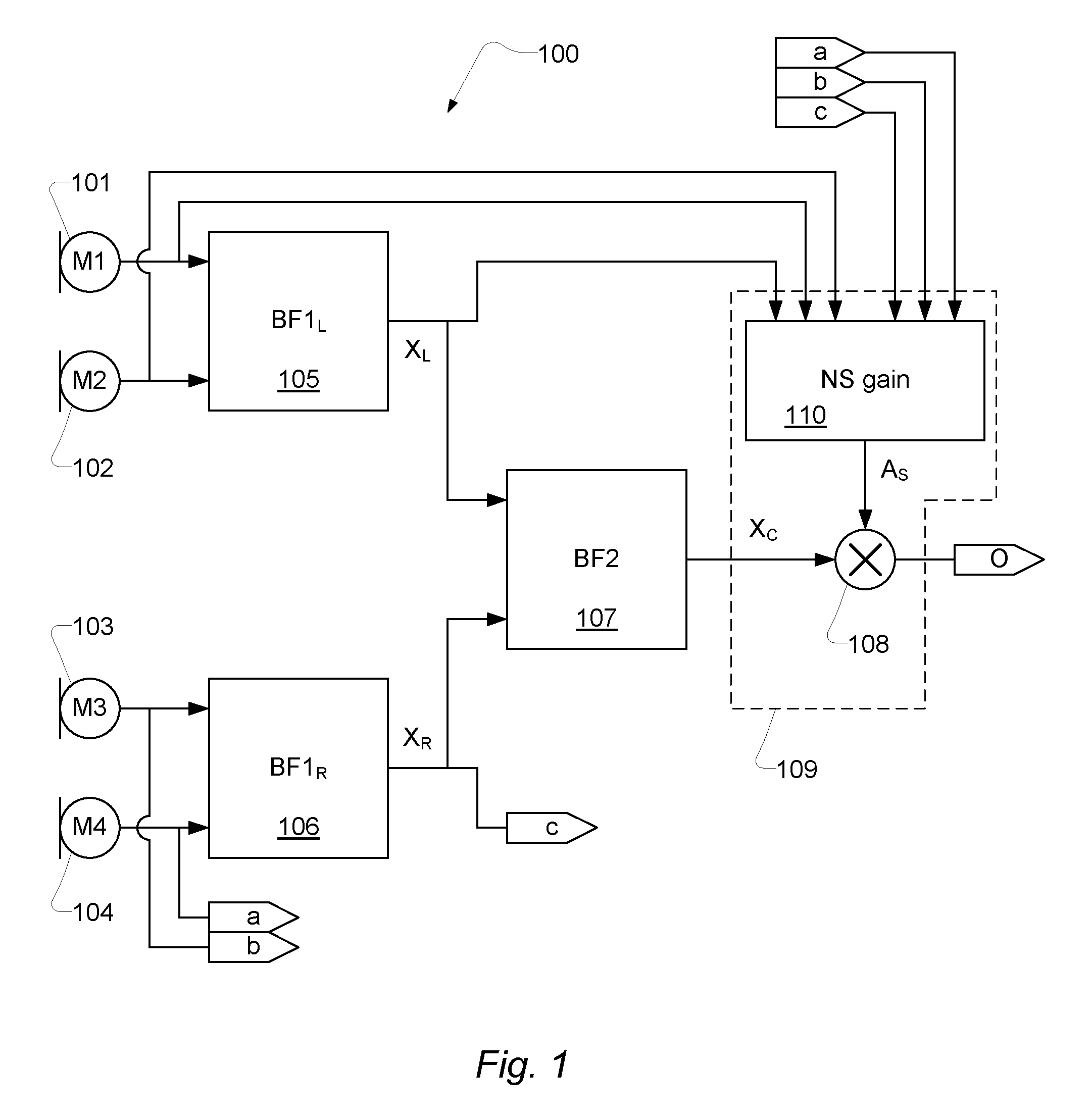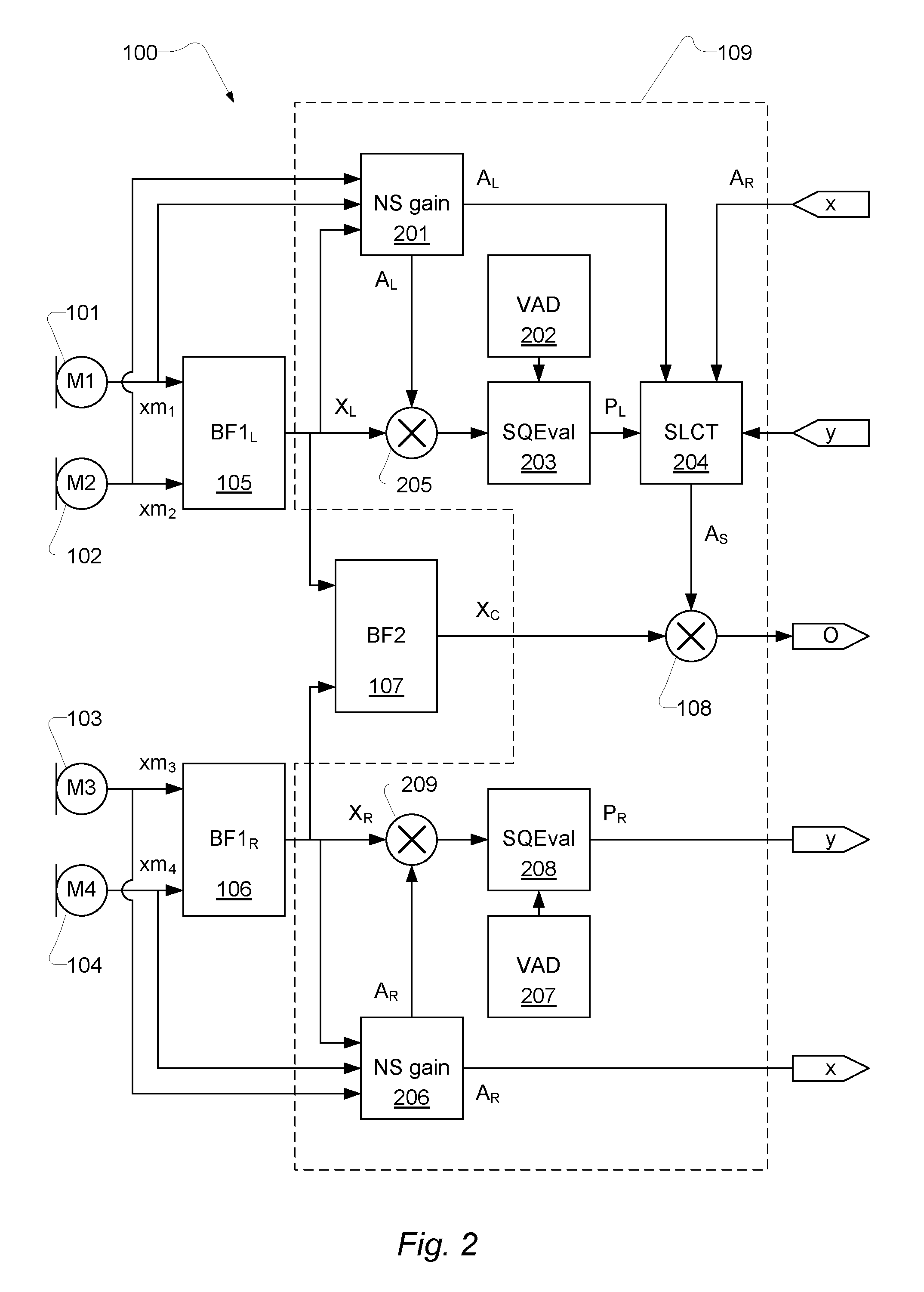Headset and a method for audio signal processing
a technology of headset and audio signal, applied in the direction of ear treatment, speech analysis, sound producing devices, etc., can solve the problems of reducing voice quality, noise may not be suppressed equally well, and the desired signal may not be preserved equally well, so as to reduce the ability to suppress or cancel noise, the noise level of the signal may be estimated, and the effect of reducing the noise level
- Summary
- Abstract
- Description
- Claims
- Application Information
AI Technical Summary
Benefits of technology
Problems solved by technology
Method used
Image
Examples
Embodiment Construction
[0060]In the following description, reference is made to the accompanying figures, which show, by way of illustration, how the invention may be practiced.
[0061]FIG. 1 shows a block diagram of a signal processor and a first and second pair of microphones. The first set of microphones, 101 and 102, and the second set of microphones, 103 and 104, are arranged with an intra-pair distance between the microphones that is relatively short compared to the microphone pairs inter-distance, between the pairs of microphones. The signal processor is designated by reference numeral 100.
[0062]The first pair of microphones 101 and 102 outputs a first microphone signal pair input to a first beamformer 105 and the second pair of microphones 103 and 104 outputs a second microphone signal pair, which is input to a second beamformer 106. The first beamformer 105 and the second beamformer 106 outputs respective output signals XL and XR.
[0063]The first beamformer 105 and the second beamformer 106 are each...
PUM
 Login to View More
Login to View More Abstract
Description
Claims
Application Information
 Login to View More
Login to View More - R&D
- Intellectual Property
- Life Sciences
- Materials
- Tech Scout
- Unparalleled Data Quality
- Higher Quality Content
- 60% Fewer Hallucinations
Browse by: Latest US Patents, China's latest patents, Technical Efficacy Thesaurus, Application Domain, Technology Topic, Popular Technical Reports.
© 2025 PatSnap. All rights reserved.Legal|Privacy policy|Modern Slavery Act Transparency Statement|Sitemap|About US| Contact US: help@patsnap.com



